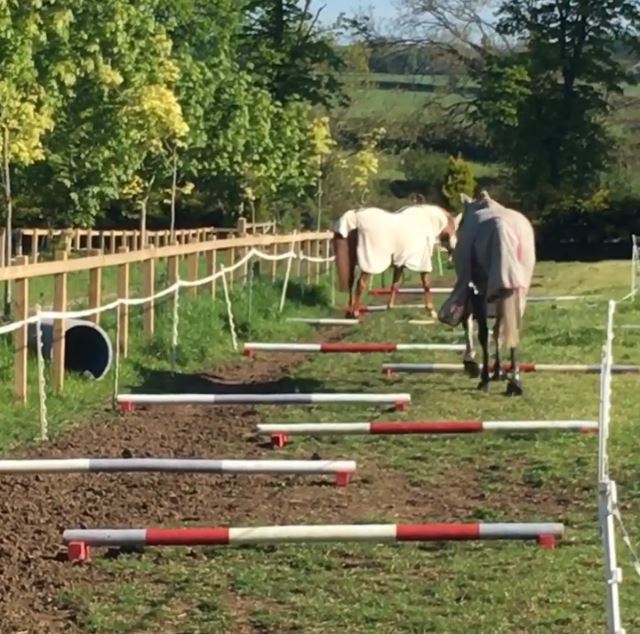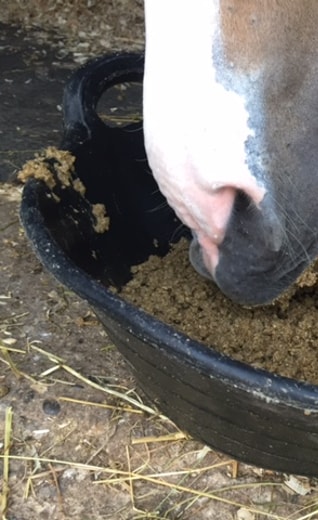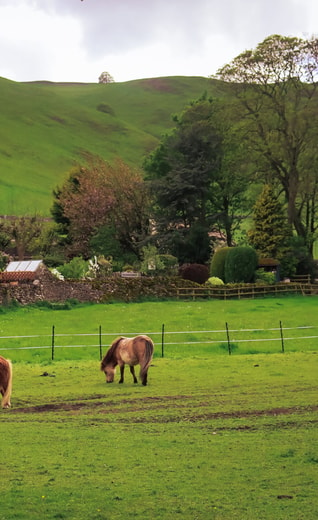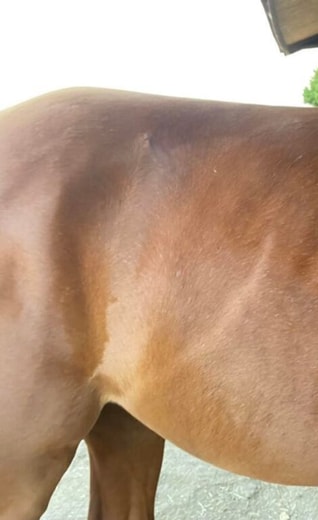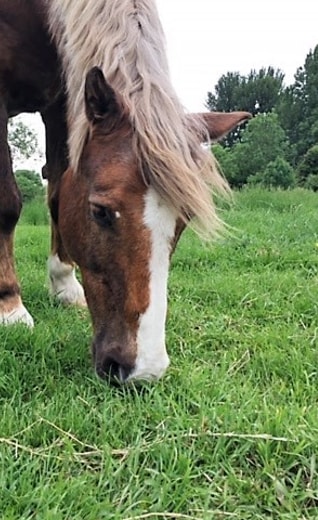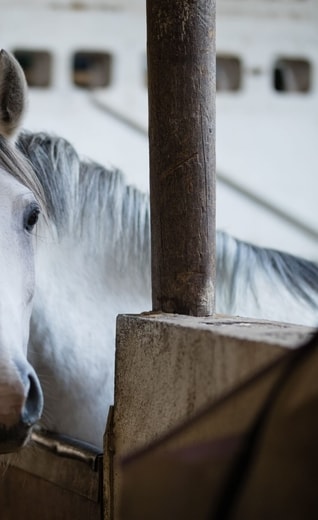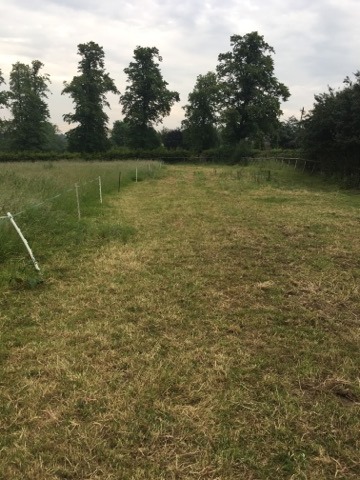
Track systems: The latest grazing fashion or valuable weight management tool?
Published June 25, 2019The battle of the bulge is something many horse owners struggle with. Increasingly mild winters, and early summer rain mean the grass growing conditions have really made weight management challenging!
As grass is the major contributor of calories in most leisure horses’ diets, restricting its intake is fundamental to any weight management program. It's also essential to reduce grass intake for horses prone to clinical conditions such as laminitis, Cushing's (PPID), EMS & PSSM.
There are various ways to reduce intake of the green stuff including the use of a grazing muzzle, strip grazing, turning out on a bare/sparse paddock, co-grazing with sheep, rotational grazing, reducing time out at pasture or increasing the stocking density. Which system you choose will depend on your individual situation and what your yard set up will allow you to do. Each method also has its own pros and cons that you will need to consider.
Whichever method you use it’s important to consider the welfare implications as well as how effective it will be at shedding the pounds. Stabling your horse or pony 23 out of 24 hours may help keep their waistline in check, but it won’t make for a fulfilling happy life which is where systems that provide a more enriching environment are gaining popularity.
Latest research has also raised concerns about restrictive grazing methods that allow for compensatory grazing or “binge” eating such as removing a grazing muzzle and then allowing access to grass, or turning out for short periods where they can eat huge amounts in a concentrated time.
Considering all of the above the use of track systems or the concept sometimes referred to as ‘paddock paradise’ is gaining in popularity. Essentially a track system is a paddock configuration that instead of an oblong or square paddock that can just encourage horses to stand in one spot and eat, places an inner fence, usually electric, in the centre of the paddock making a track around the outside. This configuration encourages more movement and foraging behaviour to try and emulate a more natural environment. Encouraging the horse to interact more with their environment can be done by adding in different terrain such as woodland areas, gravel and hills (if you have them!), providing rolling areas, scratching posts and mats or adding in natural obstacles such as logs to negotiate or if you don’t have them what about trotting poles? The planting of herbs and bushes (checking they are not poisonous) or the placing of hay in and around bushes can encourage naturally foraging behaviour. The increased movement and more time taken interacting with environment can decrease eating time and help maintain or reduce weight gain and consequently the risk of laminitis.
If setting up a track system consider what type of horse you have and how many horses you are turning out. The more horses you have, the wider you will need to make the track to avoid dominant horses cornering the more submissive ones. You will also need to think about how much grass you provide on the “track”. You may decide to have a dirt track and supply suitable supplementary forage or provide enough grass to sustain your horse(s) at an ideal body weight. Another option is to combine your track system with a strip grazing method where you move the inner fence allowing access to more grass in a controlled way. You may even want to graze thinner animals in the “inner” field to allow them access to more grass so that when the inner fence is moved there is less grass available for good doers. Be aware though that leaving a lot of grass on your tracks will not provide sufficient restriction for those that are at significant risk of laminitis or are overweight. Placement of water troughs at one end of the track system will encourage walking throughout the day for a drink.
So when considering what you can do in order to slim your horse down or stop them gaining weight in the first place, why not think about setting up a track system if you can?
However if a track system is not something you can achieve don’t despair, there are numerous ways you can help management your horse or pony weight. A new weight management guide from The University of Liverpool gives lots of help and advice.
